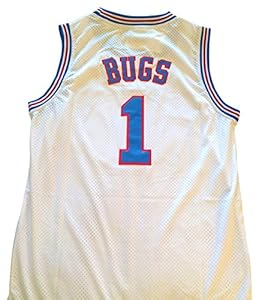Cut off saw blades are essential tools in various industries, ranging from construction to metalworking. Choosing the right type of blade can significantly impact the quality of the cut and the overall efficiency of your project. In this comprehensive guide, we will explore 14 different types of cut off saw blades, detailing their applications, materials, and characteristics.
Understanding Cut Off Saw Blades
Cut off saw blades are designed for cutting through a variety of materials including metal, wood, concrete, and plastics. The effectiveness of a blade depends on its design, material, and intended use. Here, we delve into the different types of blades available on the market.
1. Abrasive Cut Off Blades
Abrasive cut off blades are ideal for cutting hard materials like metal and concrete. They are made from a composite of materials that provide durability and strength.
- Application: Primarily used in metalworking and construction.
- Material: Typically made from aluminum oxide or silicon carbide.
- Advantages: Cost-effective and widely available.
2. Diamond Blade
Diamond blades are known for their exceptional cutting ability and durability. They are favored in construction for slicing through tough materials.
- Application: Ideal for cutting concrete, asphalt, and stone.
- Material: Composed of a core material with diamond segments.
- Advantages: Longer lifespan and faster cutting speed compared to other blades.
3. TCT (Tungsten Carbide Tipped) Blades
TCT blades are designed for heavy-duty tasks and are particularly effective for cutting wood and metal.
- Application: Used in woodworking and metal fabrication.
- Material: Made with tungsten carbide tips attached to a steel core.
- Advantages: High durability and precision cutting.
4. HSS (High-Speed Steel) Blades

HSS blades are known for their ability to retain sharpness even when cutting through tough materials.
- Application: Suitable for metal cutting.
- Material: Made from high-speed steel.
- Advantages: Good performance at high speeds and temperatures.
5. Bi-Metal Blades

Bi-metal blades combine the flexibility of high-speed steel with the toughness of high-carbon steel, making them versatile.
- Application: Effective for cutting a variety of materials, including metal and plastic.
- Material: A combination of two metals, typically HSS and high-carbon steel.
- Advantages: Resistance to wear and breakage.
6. Carbide Grit Blades
These blades are designed for cutting through very hard materials where traditional blades would struggle.
- Application: Used for cutting tile, masonry, and glass.
- Material: Made with a steel core and a layer of carbide grit.
- Advantages: Excellent for precision cuts in tough materials.
7. Wood Cutting Blades
Specialized for woodworking, these blades are designed to provide clean and efficient cuts.
- Application: Ideal for cutting various types of wood.
- Material: Usually made from high-carbon steel or TCT.
- Advantages: Reduced splintering and tear-out.
8. Specialty Metal Cutting Blades
These blades are tailored for specific metal types, ensuring optimal performance when cutting.
- Application: Used for cutting stainless steel, aluminum, or other specific metals.
- Material: Varies based on the metal type, often HSS or TCT.
- Advantages: Custom-designed for efficiency and longevity.
9. Plastic Cutting Blades

Designed for cutting plastic materials, these blades reduce melting and ensure clean cuts.
- Application: Used for PVC, acrylic, and other plastics.
- Material: Often made from high-speed steel.
- Advantages: Minimized friction to prevent melting during cuts.
10. Slitting Blades

Slitting blades are designed for cutting thin materials, providing precise and clean cuts.
- Application: Used for cutting thin strips of metal or plastic.
- Material: Typically made from HSS or carbon steel.
- Advantages: High precision and minimal waste.
11. Notched Blades

Notched blades are designed for specific applications, enhancing their performance in certain materials.
- Application: Effective for cutting through reinforced materials.
- Material: Can be made from various materials, including carbide.
- Advantages: Improved cutting efficiency and reduced heat generation.
12. Circular Saw Blades
These versatile blades can be used with various cutting machines and are suitable for different materials.
- Application: Commonly used in carpentry and metalworking.
- Material: Available in steel, carbide-tipped, or bi-metal variations.
- Advantages: Versatile and available in different sizes and tooth configurations.
13. Abrasive Chop Saw Blades

These blades are specifically designed for chop saws and are effective for fast, rough cuts.
- Application: Ideal for metal and other hard materials.
- Material: Made from various abrasives, including aluminum oxide and silicon carbide.
- Advantages: Fast cutting speed and affordability.
14. Specialty Blades for Specific Applications
Some blades are designed for niche markets and specific cutting tasks.
- Application: Tailored for tasks like cutting composites or specific manufacturing processes.
- Material: Varies greatly depending on the application.
- Advantages: Optimized for performance in their target applications.
Choosing the right cut off saw blade is crucial for achieving high-quality cuts and maintaining efficiency in your projects. The type of blade you select should depend on the material you are working with, the specific application, and the desired quality of the cut. From abrasive and diamond blades to specialty blades designed for niche applications, understanding the characteristics and advantages of each type will empower you to make informed decisions.
As you consider your next project, take into account the insights provided in this guide to select the optimal blade for your needs. The right choice will not only enhance your cutting efficiency but also ensure the longevity of your tools and the quality of your work.




